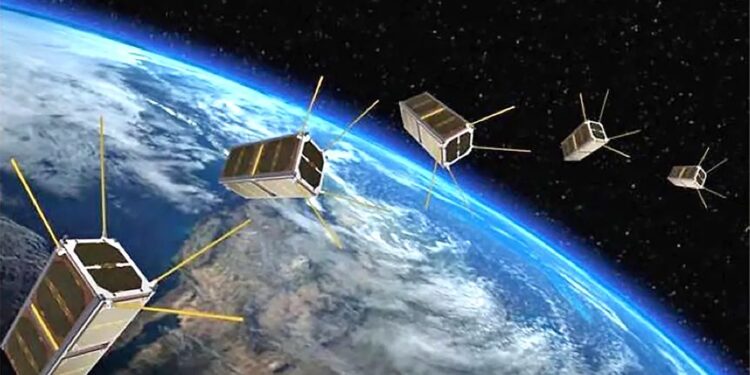
Every new space mission runs into the same wall: physics and fragility. Physics, because the speed of light and contested spectrum make real-time decision-making from the ground impossible when you need it most. Fragility, because modern space systems are software-defined, interconnected, and therefore exposed to radiation-induced faults, cascading anomalies and increasingly sophisticated cyber threats.
The consequence is simple: if your spacecraft or orbital data center must “ask Earth” before it acts, you’re already late.
The next competitive moat in space is Earth-independent operations, putting artificial intelligence capabilities next to the data so assets can detect, predict and act without waiting for a downlink. This essential architecture can be framed as three capabilities that travel together:
Detect: Manufacturers and operators should normalize and fuse heterogeneous telemetry (EPS, COM, thermal, payload, flight-software logs) and surface weak signals early — drift, outliers and pattern breaks — before they become incidents.
Predict: Turn those signals into foresight — hours to days — so operators can choose low-risk windows and pre-position resources.
Act: Encode validated playbooks so the system can execute bounded, auditable actions on-orbit (such as rate-limited power draws, re-routing workloads, applying safe reconfigurations), with human approval bands that match comms reality.
Why now? three forces have converged
Space operations have crossed a threshold where ground-centric control is a liability. The following pressures make Earth-independent autonomy the pragmatic choice — not a moonshot, but table stakes.
- Latency and congestion are structural. Megaconstellations, lunar distances and contested RF make “phone-home for every decision” unworkable.
- Cyber and safety are merging. Faults look like attacks and vice versa; triage must happen where the anomaly occurs.
- Unit economics demand resilience. Every minute of degraded service — lost observation, delayed relay or downed compute — has a cost. Autonomy protects revenue.
What Earth-independent AI looks like
This framework is a synthesis of real missions and pilots that put edge-AI to work for autonomous (and semi-autonomous) operations. From lunar guidance stacks to on-orbit routing and model-update experiments, the most effective efforts share one pattern: focused, explainable, operationally bounded AI at the edge.
- Edge-first inference with guardrails.
Spacecraft autonomy doesn’t happen on its own. It comes from disciplined operations. Operators should run compact models on flight-qualified or rad-tolerant compute (or a co-located orbital data center). Favor ensembles and interpretable methods when they match performance; reserve heavy deep learning for ground retraining. Set strict action bounds, timeouts and rollback policies. - Telemetry medallion architecture.
Use a tiered data model, often called the “medallion” architecture, to treat telemetry like a product. Bronze: immutable raw streams straight from the different sensors or logs generated by the sub-space systems. Silver: validated, cleaned, time-aligned features with basic QA. Gold: decision-grade, mission-aware views (aggregations, thresholds, health scores) that feed both edge agents and ground twins. Version schemas, features and models. - Prediction horizons that matter to operations.
A forecast is only useful if it changes a plan. For example, geomagnetic storm alerts enable operators to schedule comms, harden configurations or throttle high-risk activities. Tie every model to a concrete decision window. - Human-in/on-the-loop by design.
Autonomy doesn’t remove humans; it upgrades them. Algorithms should be made to provide clear, ranked recommendations; show “why now” (feature attributions, confidence, counterfactuals); and allow fast approvals when windows open. - Security that assumes isolation.
Edge agents should operate with least privilege, hardware-rooted identity, signed models and local policy stores. Expect intermittent comms. Design key rotation, attestation, and policy updates to succeed opportunistically.
A call to action: Build autonomy into the blueprint
Spacecraft manufacturers and operators should act now to embed autonomous decision capabilities directly into their design and mission architecture, not postpone it until after launch. Waiting creates two forms of debt:
- Integration debt: Retrofitting decision loops into a system that wasn’t designed for them is slow, expensive and risky.
- Data debt: Without onboard analytics from day one, you miss critical features and labels that would have accelerated model learning and mission insight.
The actionable path forward is to start small but start now:
- Equip new spacecraft with AI-ready edge compute and modular telemetry pipelines.
- Define safe operational playbooks where autonomy can act within verified limits.
- Maintain digital twins on the ground for validation, regression and post-incident learning.
- Quantify the business case — prevented incidents, downtime avoided, dollars protected.
If industry leaders fail to move decision-making closer to where data and risk coexist — on-orbit — the consequences will be cumulative: longer recovery times, higher mission costs and vulnerability to both natural and adversarial disruptions.
The prize: a self-reliant space infrastructure
Earth-independent operations unlock new classes of missions: on-orbit data centers that continue serving during storms; autonomous inspection and repair; lunar logistics that don’t stall when the line to Earth is noisy. In a decade, “must call home” will sound as dated as dial-up.
Space isn’t forgiving. The winners will be those who design for autonomy now, ensuring every satellite, probe and orbital compute node can detect, predict, and act — with confidence and without waiting.
<em>Miguel A. Lopez-Medina is Founder and CEO of America Data Science New York (ADSNY) and Senior Artificial Intelligence Researcher Engineer at Rice University. He develops edge-to-cloud AI frameworks for resilient and autonomous space operations.
SpaceNews is committed to publishing our community’s diverse perspectives. Whether you’re an academic, executive, engineer or even just a concerned citizen of the cosmos, send your arguments and viewpoints to opinion@spacenews.com to be considered for publication online or in our next magazine. The perspectives shared in these opinion articles are solely those of the authors.
